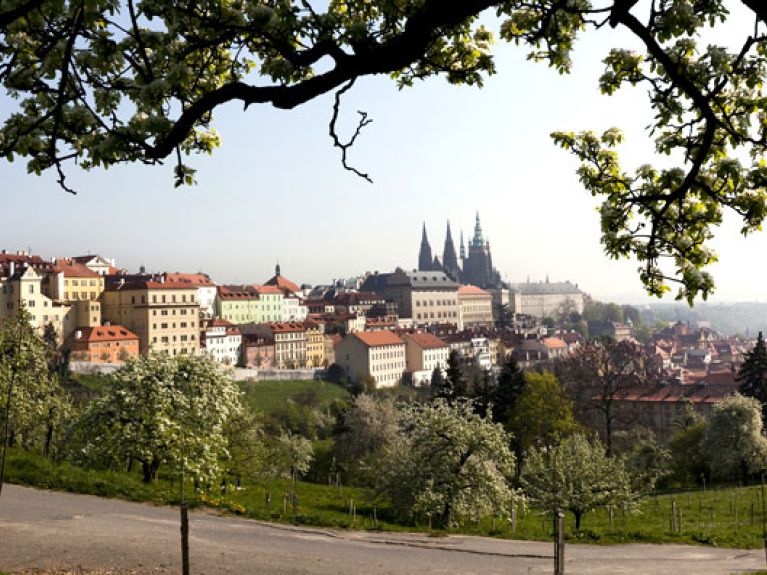Germany and the Czech Republic
Gerhard Richter’s first major retrospective in Eastern Europe, street food from both countries and a youth exchange: there is plenty to discover in the German-Czech Cultural Spring 2017.

Gerhard Richter is an extraordinary artist: his paintings are so astonishingly diverse that it is hard to believe they are all the work of the same artist. From the realism of the 1960s to abstraction – born in Dresden in 1932, this artist is a master of just about every genre. What is particularly fascinating is the way Richter manages repeatedly to make some reference to German history in his very different works. His works have now broken all the records for prizes won by living European artists. Richter himself often describes the sums that are paid for his art as “completely absurd”. It is virtually impossible to put a price on the artistic value of his oeuvre, on the other hand. From 26 April 2017, more than 50 of his works will be on show at the National Gallery in Prague: until 3 September 2017, this museum in the Czech capital will be presenting the first major retrospective of this famous contemporary German artist in Eastern Europe.
Document of reconciliation
Robert Storr, an American art expert and a friend of Richter, has curated the retrospective as part of the German-Czech Cultural Spring 2017. The initiative, which includes the Richter exhibition as one of its highlights, is a kind of birthday present from both countries to one other: 2017 will see Germany and the Czech Republic celebrating the 20th anniversary of the German-Czech Declaration from 21 January 1997. A fundamental document signed by both governments, the declaration calls for bilateral relations between the two countries not to be burdened by the difficult questions of the past but for attention to be focused on the future. To ensure that mutual relations could indeed thrive, both countries also laid the foundation stone for bringing people of their two nations together in the form of the German-Czech Future Fund and the German-Czech Discussion Forum.
Major supporting programme
Besides the Richter exhibition in Prague, the cultural spring is also blossoming in other regions of the Czech Republic. Initiated by the Federal Foreign Office, the project is being implemented jointly by the German Embassy in Prague and by the Goethe-Institut Prague, in cooperation with the Czech Ministry of Culture, Ministry of Foreign Affairs and the German-Czech Future Fund. In all, 170 joint projects are planned until June, with around 40 of them also involving German-Czech encounters in Germany. Numerous festivals will showcase what the two countries have in common, as well as their regional peculiarities. Roast pork, cabbage and dumplings for example are all dishes that are popular in both Germany and the Czech Republic, though they taste quite differently because they are prepared in different ways. One event on the cultural spring programme is therefore “Diversity through Gastronomy”. The Bohemian Brethren, a Protestant Christian denomination who fled to Berlin Rixdorf in the eighteenth century, are a good example of how cultural diversity can be expressed in gastronomy. They established a “Bohemian village” in Rixdorf that has today grown to become a trendy and multi-ethnic district. Lebanese, Iranians and other nationalities now influence the new local cuisine in the Rixdorf neighbourhood. “Rixbox”, a popular snack bar, has become a hub for neighbourhood get-togethers. Inspired by this model, restaurateurs and local people will work together to set up a mobile “Gastro-Box” in various Czech cities. This will be used to provide catering for the regional programme – supported in both the public domain with cookery clubs, farmers’ markets, school and district initiatives, and online via blogs and social media.
Together into the future
A youth exchange will also form part of the cultural spring: along the German-Czech border, a total of 22 youth tournaments involving 350 youth teams and 4,000 participants will be staged in cooperation with the Czecho-German Football School and Tandem, the German-Czech Youth Exchange Coordination Centre. In 2016 the German-Czech Future Fund made funding available for projects designed to promote German-Czech cultural diversity and German-Czech cultural start-ups as its way of contributing to the anniversary. This will ensure that there is further impetus to drive forward bilateral relations in the coming years, too.
© www.deutschland.de

